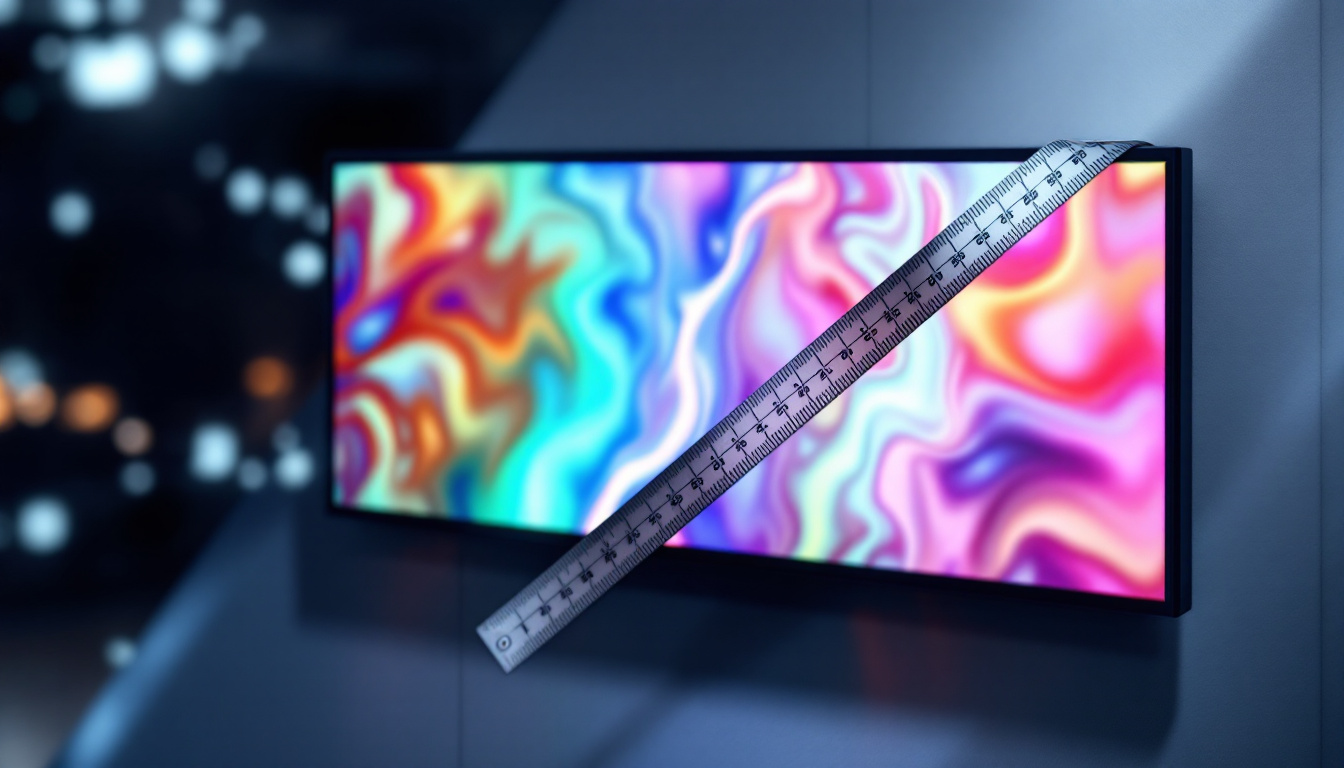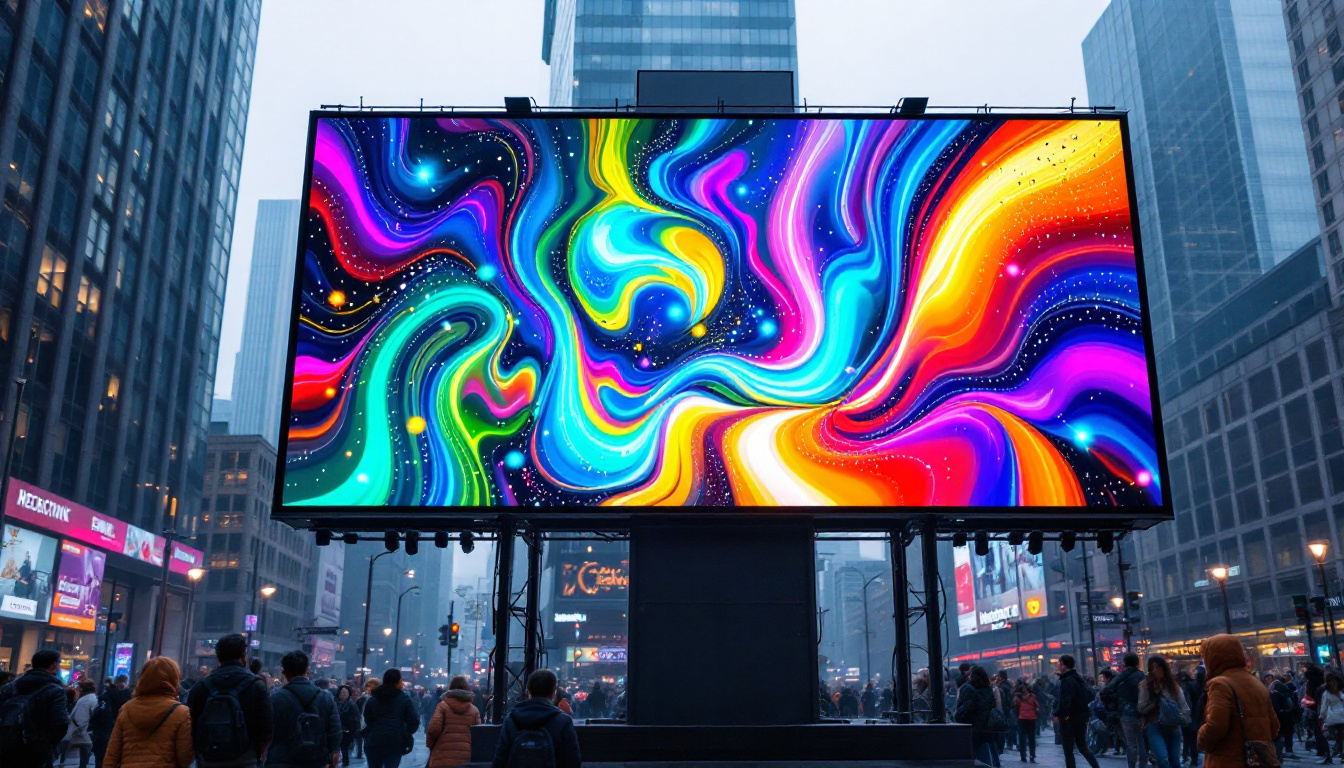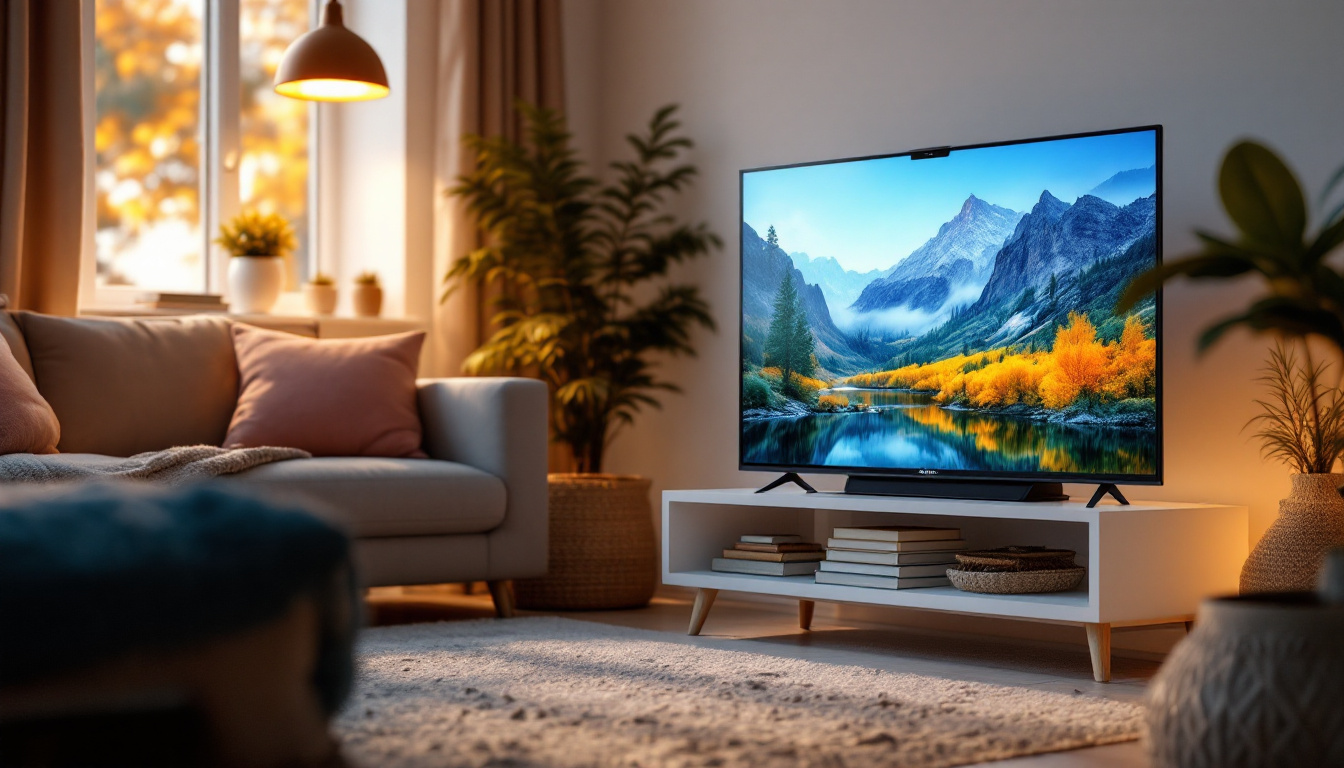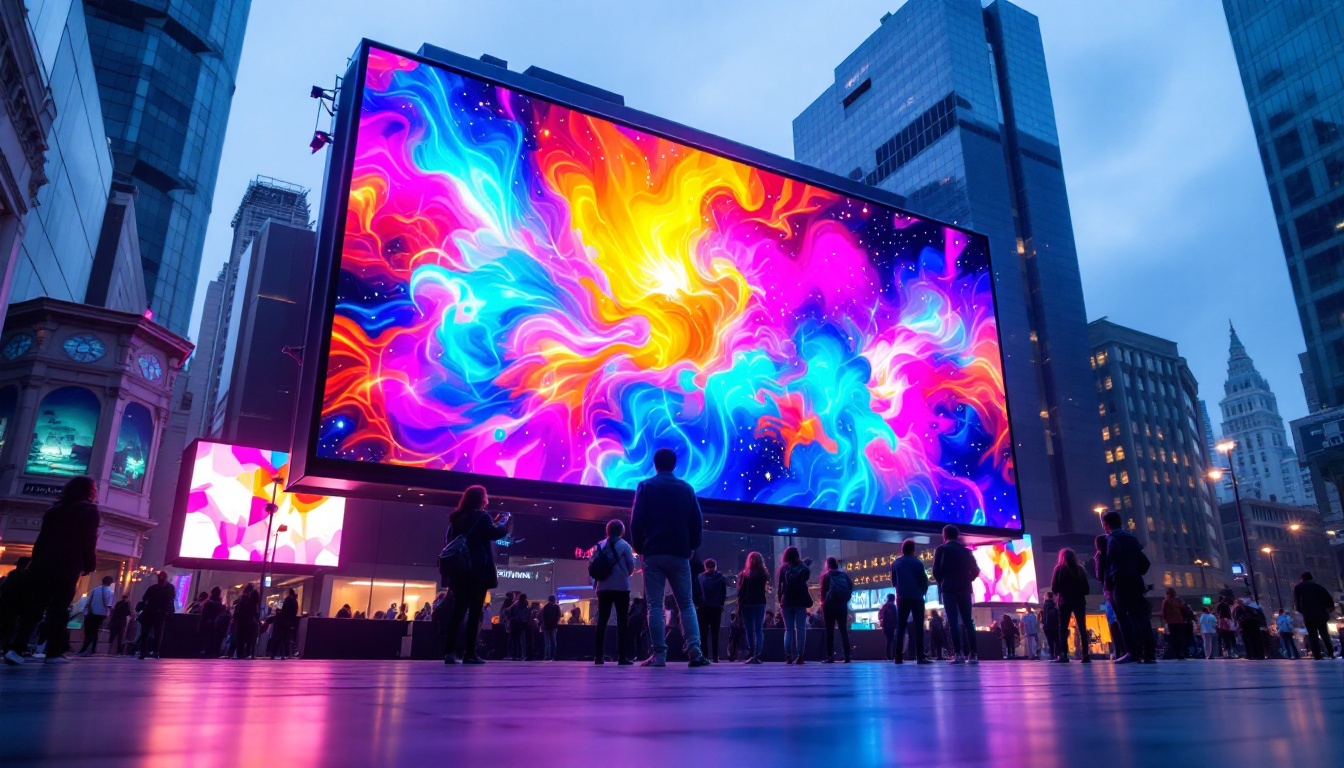What Is TV Contrast: LED Display Explained
When shopping for a new television, one of the most frequently mentioned specifications is contrast ratio. But what exactly does TV contrast mean, especially in the context of LED displays? Understanding contrast is crucial for anyone who values picture quality, whether you’re a casual viewer or a home theater enthusiast. This article delves into the concept of TV contrast, explains how it works in LED displays, and explores why it matters for your viewing experience.
Understanding TV Contrast: The Basics
Contrast ratio is a measurement that describes the difference between the darkest black and the brightest white a TV screen can produce. In simple terms, it indicates how well a television can display details in shadows and highlights simultaneously. A higher contrast ratio generally means deeper blacks and more vibrant colors, which translates to a more immersive and lifelike picture.
For example, a TV with a contrast ratio of 1,000:1 means the brightest white is 1,000 times brighter than the darkest black the screen can produce. However, this number alone doesn’t tell the whole story, as the way contrast is measured can vary widely between manufacturers and technologies. Some brands may use dynamic contrast ratios, which can inflate numbers by adjusting brightness levels based on the content being displayed, leading to confusion among consumers trying to compare models.
Why Contrast Matters in TV Viewing
Contrast affects the overall image quality and how comfortable it is to watch a TV for extended periods. High contrast helps reveal subtle details in dark scenes, such as shadows in a movie or textures in a video game. It also enhances color depth, making images appear more natural and vibrant. For instance, in a horror film, the ability to discern details in the shadows can significantly impact the suspenseful atmosphere, drawing viewers deeper into the narrative.
Without sufficient contrast, images can look washed out or flat, which diminishes the viewing experience. This is especially noticeable in dimly lit rooms or during nighttime viewing when the difference between light and dark areas becomes more critical. Furthermore, the viewing environment plays a pivotal role in how contrast is perceived; ambient light can wash out the blacks on the screen, making a high contrast ratio even more essential for achieving a captivating viewing experience. Therefore, understanding your room’s lighting conditions and how they interact with your TV’s capabilities can help you make the most informed choice when selecting a television that meets your viewing preferences.
How LED Displays Handle Contrast
LED TVs use light-emitting diodes to illuminate the screen, but the way they manage contrast is quite different from older technologies like plasma or LCD with CCFL backlighting. Understanding the LED display structure helps explain the challenges and advantages in achieving good contrast ratios.
LED Backlighting and Its Impact on Contrast
Most LED TVs are actually LCD panels lit by LED backlights. The LCD layer controls the image pixels by blocking or allowing light to pass through, while the LED backlight provides the illumination. Since the backlight is always on (except in specific dimming zones), the darkest black a TV can produce depends on how effectively the LCD can block this light.
This setup inherently limits the contrast ratio because some light leakage occurs, preventing true black from being displayed. As a result, LED TVs often struggle to match the deep blacks achievable by OLED TVs, where each pixel emits its own light and can be turned off completely.
Local Dimming: Enhancing Contrast on LED TVs
To improve contrast, many modern LED TVs feature local dimming technology. This involves dividing the backlight into zones that can be dimmed or brightened independently based on the content being displayed. For example, if a scene has a bright object on a dark background, the zone behind the dark area can dim, producing deeper blacks and a higher contrast ratio.
Local dimming can be edge-lit or full-array. Edge-lit local dimming places LEDs along the edges of the screen, which can limit precision, while full-array local dimming (FALD) places LEDs directly behind the screen for better control and improved contrast performance.
Types of Contrast Ratios in LED TVs
When looking at TV specifications, it’s important to understand the different types of contrast ratios manufacturers report, as they can be measured under various conditions and may not always be directly comparable.
Static Contrast Ratio
Static contrast ratio measures the difference between black and white on the screen at the same time. This is the most relevant figure for everyday viewing because it reflects how the TV handles scenes with mixed brightness levels.
A higher static contrast ratio means the TV can display more detail in both shadows and highlights simultaneously, contributing to a more realistic image.
Dynamic Contrast Ratio
Dynamic contrast ratio measures the difference between the brightest white and the darkest black the TV can produce, but not necessarily at the same time. It often involves adjusting the backlight brightness dynamically depending on the scene.
While dynamic contrast ratios can be extremely high (sometimes in the millions to one), these figures are less useful for comparing TVs because they don’t represent real-world viewing conditions. Manufacturers often use dynamic contrast ratios in marketing, but consumers should focus more on static contrast and real-world performance.
Native Contrast Ratio
Native contrast ratio refers to the inherent contrast capability of the LCD panel without any backlight adjustments. It is a fixed value determined by the panel’s ability to block light. This metric helps indicate the baseline contrast performance of the TV before technologies like local dimming come into play.
Factors Influencing Contrast in LED TVs
Beyond the basic technology, several factors influence the actual contrast performance of an LED TV. Understanding these can help consumers make informed decisions when selecting a model.
Panel Type and Quality
The type of LCD panel used (such as IPS or VA) plays a significant role in contrast. VA (Vertical Alignment) panels typically offer better native contrast ratios than IPS (In-Plane Switching) panels, making them preferable for darker room viewing.
However, IPS panels often provide wider viewing angles and more accurate colors, so the choice depends on the user’s priorities.
Backlight Technology
The quality and type of backlighting, including whether the TV uses edge-lit or full-array local dimming, greatly affect contrast. Full-array local dimming with more zones generally results in better contrast and black levels.
Ambient Lighting Conditions
The environment where the TV is used also impacts perceived contrast. In bright rooms, reflections and glare can wash out the image, reducing the apparent contrast. Conversely, in dark rooms, TVs with poor black levels may reveal light blooming or halo effects around bright objects.
Calibration and Picture Settings
Proper calibration of brightness, contrast, and gamma settings can optimize a TV’s contrast performance. Many TVs come with preset modes like “Cinema” or “Movie” that aim to balance these settings for better contrast and color accuracy.
Comparing LED Contrast with Other Display Technologies
While LED TVs are among the most popular on the market, it’s helpful to understand how their contrast performance compares with other display technologies.
OLED: The Gold Standard for Contrast
OLED (Organic Light Emitting Diode) displays offer superior contrast because each pixel emits its own light and can be turned off completely to achieve perfect black. This results in infinite contrast ratios and exceptional picture quality, especially in dark scenes.
However, OLED TVs tend to be more expensive and can have issues like burn-in with static images, which may concern some users.
QLED and Mini-LED Improvements
QLED TVs, which are essentially LED TVs with quantum dot technology, improve color brightness and accuracy but still rely on LED backlighting. Their contrast ratios can be enhanced with advanced local dimming and Mini-LED backlights, which use thousands of tiny LEDs for more precise control.
Mini-LED technology narrows the gap between traditional LED and OLED contrast performance, offering deeper blacks and higher contrast at a more affordable price point.
How to Choose a TV Based on Contrast
Given the importance of contrast for picture quality, here are some tips for selecting a TV that meets your needs.
Consider Your Viewing Environment
If you watch TV mostly in a dark room, prioritize models with high native contrast and effective local dimming. VA panels and full-array local dimming are ideal for these conditions.
For bright rooms, look for TVs with high peak brightness and anti-reflective screens to maintain contrast despite ambient light.
Look Beyond the Numbers
Don’t rely solely on manufacturer contrast ratio specifications, especially dynamic contrast ratios. Instead, read professional reviews and watch demonstration videos to see real-world performance.
Test the TV In Person
If possible, view the TV in a store setting to judge contrast and black levels yourself. Pay attention to shadow detail, blooming around bright objects, and overall image depth.
Balance Contrast with Other Features
Contrast is important, but also consider resolution, color accuracy, refresh rate, and smart TV capabilities to find the best overall value.
Conclusion: Why TV Contrast Matters
Contrast ratio is a fundamental aspect of TV picture quality, influencing how vivid, detailed, and immersive your viewing experience will be. In LED displays, contrast is shaped by the LCD panel, backlighting technology, and local dimming capabilities.
While LED TVs cannot match the perfect blacks of OLEDs, advances like full-array local dimming and Mini-LED backlighting have significantly improved their contrast performance. Understanding the nuances of contrast ratios and how they are measured helps consumers make better-informed decisions when choosing a TV.
Ultimately, selecting a TV with strong contrast tailored to your viewing environment ensures you enjoy movies, sports, and games with stunning clarity and depth for years to come.
Discover the Ultimate Contrast with LumenMatrix
Now that you understand the importance of contrast in LED displays and how it can transform your viewing experience, it’s time to see the difference for yourself. LumenMatrix, a leader in LED display technology, offers an extensive range of innovative solutions designed to bring your visual content to life. From Indoor and Outdoor LED Wall Displays to Custom and All-in-One LED solutions, LumenMatrix is dedicated to enhancing your brand visibility and audience engagement. Experience the pinnacle of contrast and clarity with LumenMatrix’s cutting-edge LED displays. Check out LumenMatrix LED Display Solutions and revolutionize your visual communication today.































